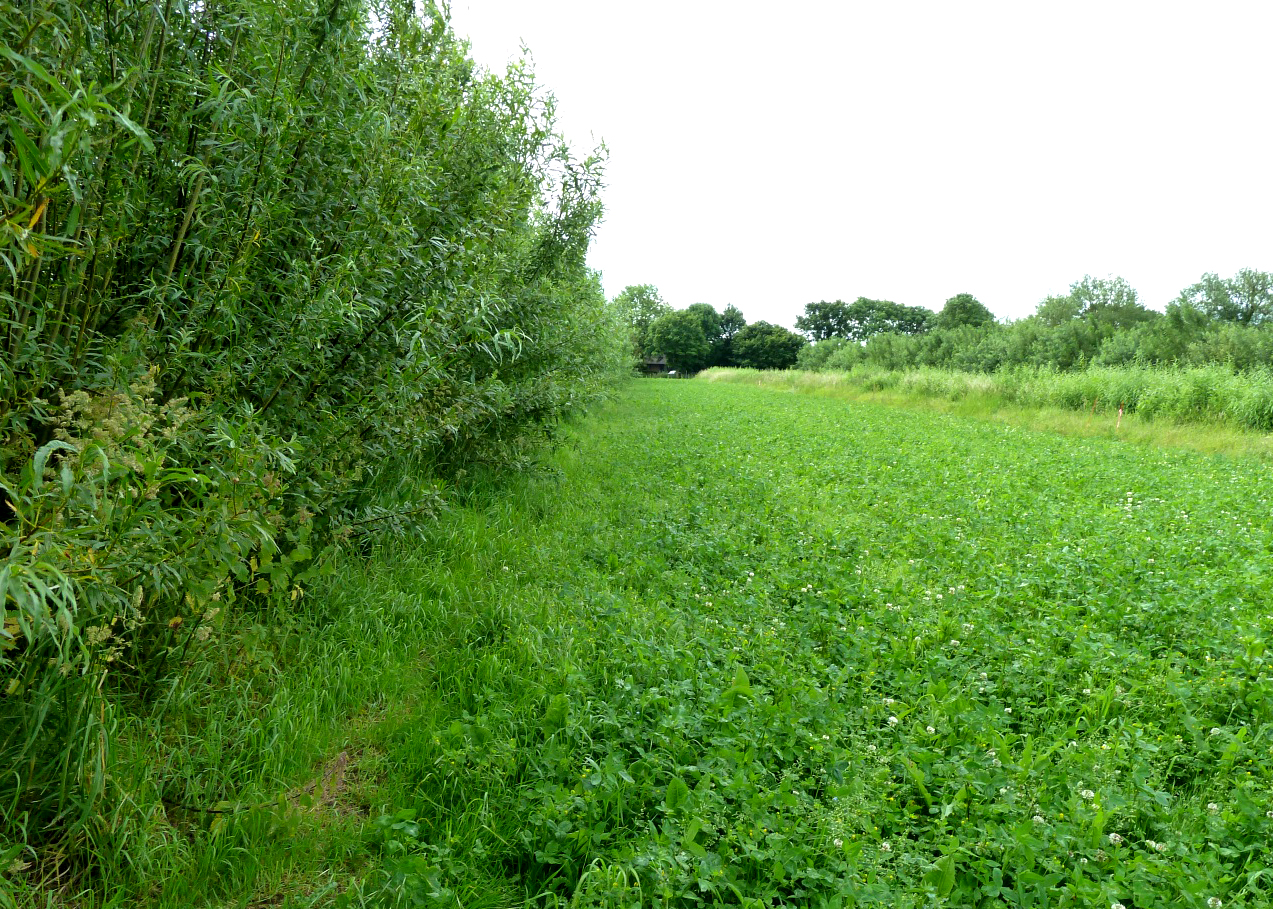Productive land is subject to many competing demands such as increased food production to meet the needs of a growing world populatio, demand for biomass for bioenergy such as short rotation coppice to meet the EU Renewable Energy Directive target of 20% of Europe’s energy from renewable sources by 2020, and the demand for farm land to support and deliver ecosystem services such as safeguarding soil, water and air quality, mitigating climate change, and supporting biodiversity.
By Jo Smith, Organic Research Centre, UK
Agroforestry (combining trees and agriculture) has the potential to help to meet these conflicting demands by integrating energy production from short rotation coppice, and livestock production, without compromising the delivery of ecosystem services. Although the potential of agroforestrybased agricultural systems has been demonstrated in principle, evidence on the performance of such systems in the context of European low-input production systems is lacking.
This task in the SOLID project therefore aims to evaluate the economic and environmental impact of agroforestry on lowinput and organic dairy systems in the UK.

The agroforestry system at Wakelyns Agroforestry (eastern England 52.4ºN, 1.4ºE) consists of twin rows of willow (Salix viminalis) with 10-12m wide crop alleys between (Fig. 1). An organic arable rotation in the alleys includes cereals, potatoes and a fertility-building ley. Coppicing for bioenergy takes place in December or January on a two year rotation.
Within the crop alleys, a fertility-building ley was sown in late May 2011 as a mixture of white clovers, red clovers, lucerne, yellow trefoil and chicory. While this system does not contain livestock, the mature SRC agroforestry system provides an opportunity to address questions regarding productivity and environmental impacts.
As a comparison, a neighbouring field with the same ley mix sown at the same time, has been used as a control. Managed as part of the organic arable rotation, this area has no trees within the field.

Silvopastoral systems that combine livestock and trees offer two main advantages for the animals, which may have positive impacts on productivity. First, trees modify microclimatic conditions including temperature, water vapour content or partial pressure, and wind speed, which can have beneficial effects on pasture growth and animal welfare. The research at Wakelyns showed that wind speeds were lower in the agroforestry alleys in comparison with the no-tree control.
Measured monthly, wind speeds were on average 2.7mph and up to 6.5mph stronger in the control than in the agroforestry. Combined with point measurements of air temperature at 1.5m, the resulting wind chill was significantly colder in the control plots during the winter months witha noticeable difference of 1 to 4°C during the cooler months.
Second, trees also provide alternative feed resources during periods of low forage availability, particularly in climates with seasonal droughts such as the Mediterranean. With SOLID partners MTT and CSIC, the feed value of the willow was assessed in 2011.
Crude protein concentrations ranged from 99 to 167 g/kg DM and organic matter digestibility varied between 0.38 and 0.41 depending on the age of the willow and the season of harvest. While it is apparent that the willow is limited as a feed resource for dairy cows in terms of feed values and actual amounts, the greatest potential is as a source of roughage for dry cows or heifers, or for other ruminant species such as goats which are better able to digest the woody material.

In addition to the agricultural production, the output from the tree component, in this case as woodchip for bioenergy, can increase overall productivity from the system. Assessments of the productivity in the ley and from the willow harvested for biomass in 2012 and 2013 recorded higher biomass production in the agroforestry (Fig. 3). Woodchip from the willow SRC at Wakelyns feeds into the biomass boiler that heats the farmhouse – this saves an estimated £1200/yr on heating oil.
The research in this task suggests that agroforestry can provide a sustainable approach to ruminant production by increasing overall productivity, and modifying the microclimate to improve animal welfare. A second part of this deliverable, due in 2015, will report on the establishment and management of an SRC willow/alder silvopastoral system at Elm Farm, Berkshire, where animals from a dairy unit will be integrated into the system.
